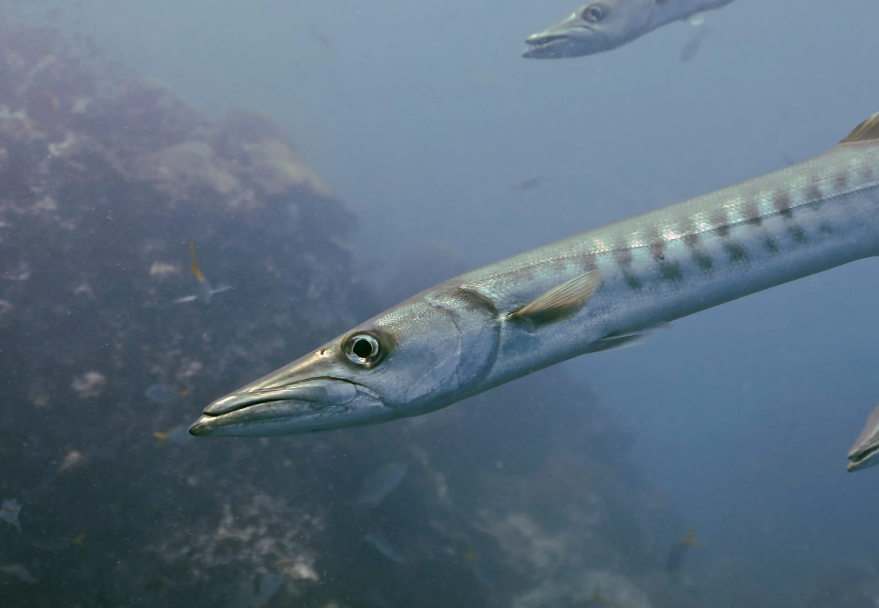
Great barracudas have a large mouth containing two sets of teeth. The outer row of small, razor-sharp teeth are for tearing, and the inner set of larger teeth for piercing. These closely set teeth work in tandem to rip into the flesh of their prey. The long needle-like teeth fit into holes in the opposing jaw, which allows the barracuda to fully close its mouth.1 When hunting, they alternate between swallowing smaller prey whole and cutting larger prey in half to be devoured in pieces. They are opportunistic predators that hunt mainly by sight.
Great barracudas are naturally inquisitive. Because they hunt mainly by sight, barracudas sometimes attempt to steal fish from spear fishers or approach divers, mistaking the glint of a diving knife as a shiny fish. Despite this behavior, barracudas rarely attack humans unprovoked.
Adult great barracudas are large fish — some exceeding five feet long and weighing more than 100 pounds — with a lifespan of around 14 years in the wild. Given their size and speed, barracudas do not have many predators capable of catching and eating them.
Some anglers value barracudas as a gamefish because of their strength and speed. The great barracuda is not prized as a commercial fish in North American waters, but they can be caught as bycatch in gillnets and other fishing gear.